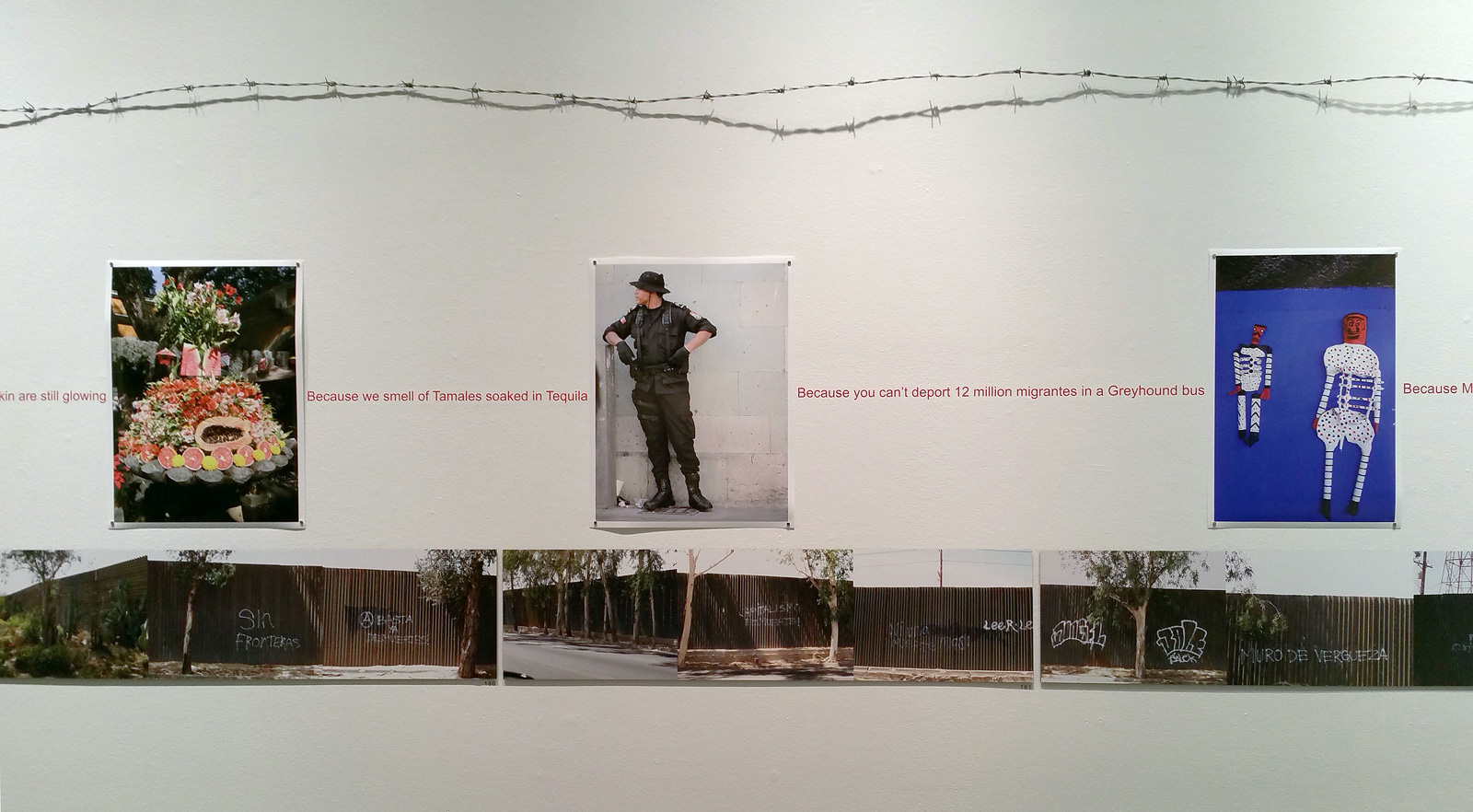Grapes & Tortillas
2016
Grapes & Tortillas continues a concern with social justice, celebrating the presence and contribution of hundreds of Mexican seasonal agricultural workers currently in vineyards, greenhouses, orchards and on farms across Canada. Under the Seasonal Agricultural Workers Program (SAWP), a program co-sponsored by the Mexican and Canadian governments, workers come for up to 8 months to work 6-7 days a week for minimum wage; they pay taxes, CPP and EI—though they don’t receive benefits. The majority of these workers are poor and uneducated, with families—insurance that they’ll return to Mexico. Economic necessity motivates these men and women to sacrifice for the well-being of their families. ‘Parachuted’ into a foreign culture, their presence is largely invisible to permanent residents. Barriers to social interaction, such as language, gender, race, physical isolation and lack of transportation, distance them from inclusion in local communities and an inter-cultural understanding.
Focusing on workers in the Okanagan Valley of BC, participants were asked to write--on flattened tortillas—their name, place of origin and a thought or wish to share with gallery viewers. The great majority spoke of how much they miss their families, and that they are working for their benefit.
One hundred sixty men and women were photographed, holding their tortilla with text. Other elements of the installation included a replication of a typical Mexican kitchen with images of indigenous Oaxacan activist Doña Vicky, and a recorded interview with her; also a shrine alcove with a large banner of the Virgin of Guadalupe—patron saint of Mexico--surrounded by chairs holding enlarged traditional Mexican lottery cards—representing fate in combination with faith. Vintage wooden orchard ladders framed the walls, and black Oaxacan pottery urns held fresh marigolds, a flower sacred to the Aztec’s and still used in Mexico for the Day of the Dead. Bisecting the gallery, a transparent “wall” of orchard netting holds over 2,000 ribbons, giving a visual sense of the number of seasonal farmworkers in the Okanagan Valley alone. Ribbons are often tied onto shrines in Mexican churches. Three walls are hung with Tortilla Wall, a photographic mural documenting the wall on the Mexican side of the border from Tijuana to Mexicali; included are text excerpts from US poet laureate Juan Felipe Herrera’s poem, 187 Reasons Why Mexicanos Can’t Cross The Border, used with permission, and a selection of photos from my archive on Mexican culture. A strand of barbed wire creates a vicious line above the text and images. Music by Lila Downs and Lhasa de Sela plays in the gallery space (with permission).
These workers contribute enormously to the agricultural industry and economy across Canada. This work aimed to increase worker visibility, to highlight the richness of Mexican culture, especially as related to food, and to build a bridge to appreciation and understanding in viewers/consumers.
For many Mexicans, the figure of the Virgin of Guadalupe, or Nuestra Señora de Guadalupe, binds the nation like no other. Prayers to her for protection are made with the belief that she intercedes in the common welfare of her supplicants. Her provenance goes back to an Aztec famer named Juan Diego, also known as Juan Diegotzil (1474-1548). Back in the early sixteenth century, he was walking through Tepayac hill country north of Mexico City, a sacred site of the Aztec moon goddess, where he encountered an apparition of a beautiful woman radiating light.
…Also known as Tonantzin, Our Sacred Mother in the Nahuatl language, she is the female Aztec deity symbolically connected to fertility and the earth. It is no wonder that migrant labourers have a special relationship to Guadalupe/Coatlallope/Tonantzin, not only for her protection and her indigenous connection, but also because it was a farmer who received her visitation. And of course there is this divine figure’s association with the solar cycle and with fertility.
From the essay Dear Eater commissioned by Kelowna Art Gallery for the exhibition catalogue Deborah Koenker Grapes and Tortillas, Kelowna, BC in 2016 by Randy Lee Cutler, Professor at Emily Carr University of Art and Design, writer, theorist, artist and gardener.
As a child of farmer workers, as a Campesino boy—I lived in a separate world from the typical mainstream world of the 50s in California. Roads, mountains, ranchitos and the open landscapes of the San Joaquín Valley were my life. Skies and animals, my father’s hand-made trailer, my mother’s world of sayings, proverbs, corridos and stories about crossing into Juárez from Tepito, Mexico after the Mexican Revolution—these were the forceful currents that guided my young life. In my family, we went from extreme poverty in Mexico to just “plain ol’ being poor” in the US. Later, after years of being a poet, and after many more being in the rise and fall of the Chican@ Movimiento, I became keenly aware that we really never were poor, we were enduring, incredible, and rock-hard pioneers.
From Introductory text to Deborah Koenker’s Tortilla Wall photographs, Grapes and Tortillas exhibition catalogue by Juan Felipe Herrera, Poet Laureate of the United States (2015-2017), writer, teacher, activist, cartoonist, performance artist.
The Okanagan Valley appears beautiful and accommodating, but it is not a simple place; cultures from three continents have been colliding there for more than a century, and foreign seasonal workers add another layer of complexity to the mix. But this is Canada, and negotiating these differences—for good and ill—has been at the core of the national project for the past 400 years. It is not an overstatement to say that this—mediating and accommodating broad diversity—is a defining characteristic of a “true Canadian.” This is the real gift of Koenker’s show: the opportunity to bridge that cultural gulf and meet some of the people who are doing jobs that most Canadians have become too wealthy and comfortable to consider doing themselves.”
From Seeing the Unseen: 160 Views of a Foreign Worker, Grapes and Tortillas exhibition catalogue by John Vaillant, freelance writer and author of The Golden Spruce (Knopf, 2005), The Tiger (Knopf, 2010), and The Jaguar’s Children (Knopf, 2015).














